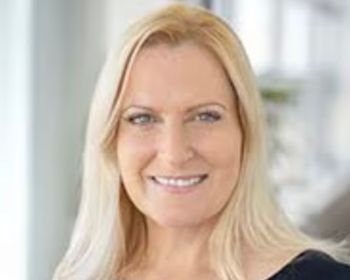
COVID-19 Amplified Where Data, Technology Could Be Put to Better Use

Although the world is very much still in the middle of the COVID-19 pandemic, a panel of experts tackled lessons learned so far.
A few months ago, many countries thought they were out of the woods when it came to the COVID-19 pandemic, but the spread of the delta variant has highlighted the challenges that remain.
During a panel at the HIMSS21 Digital Program, a panel of global experts highlighted lessons learned, equity and disparities, data and technology, global resources, and more.
The COVID-19 pandemic is a continuous, ever-changing challenge, said Ran Balicer, chief innovation officer, Clalit Health Services in Israel, who joined the panel via video. The country had removed restrictions and returned to life as usual at the beginning of June when COVID-19 cases were close to zero, “and then delta came.”
Similar to the United States, Israel has seen a surge in cases that is reminiscent to past pandemic waves before vaccinations rolled out, he said. So far, new cases and hospital admissions have not yet reached a point where the health system is overburdened, but he expects it will get to that point in a matter of weeks if the caseload continues its current trajectory.
In the United States, the pandemic has made it clear that the country has not invested enough in public health, said Terry Adirim, acting assistant secretary of defense for health affairs, Department of Defense. In addition to highlighting the lack of tools needed to be prepared for a pandemic of this proportion, COVID-19 has unearthed what was already known: The United States has an “unfair system with a lot of structural issues with regard to equity.”
Patrice Harris, MD, CEO and cofounder of eMed, has seen the pandemic through multiple lenses. First, she was the president of the American Medical Association for the 2020-2021 term and it was clear communicating to people what was known and what wasn’t known was crucial; second, as a psychiatrist, she appreciated the trauma and mental health issues people were facing; third, as a woman of color, she saw the huge health inequities as communities that needed access to testing and vaccines were not able to get either.
“Certainly, there are lots of issues that have been amplified, but I believe that you can’t solve a problem that you can’t identify,” she said. “So, now that we know we need to make sure there’s sustained efforts to continue to do work in all of those areas.”
Hans Henri Kluge, MB, BCh, regional director for Europe, World Health Organization, echoed Harris’ comments on inequity, pointing out that coverage of vaccinations needs to drastically scale up globally. There remains a need for countries to not only focus on the issues at home, but to also provide help to other countries.
“I say, ‘no one is safe until everyone is safe.’ Solidarity is not from the heart it has to come from the brain," he noted.
Keeping pressure on the virus is important, Kluge said. He did not advocate for any more lockdowns, but instead noted that mask mandates and social distancing remain key, as well as new approaches, such as boosters for the vulnerable, vaccines for children as schools reopen, and research into new therapeutics and second-generation vaccines.
According to Harris, there is an opportunity to leverage technology to improve access to care for people who are faced with barriers. However, she warned that use of technology has to be intentional.
“We will have to make sure we set the metrics and are intentional to make sure tech doesn’t worsen health inequities,” she said.
Adirim added that early in the pandemic, there was a rush to respond and get things out there, but “states tended to use the easy button” and it amplified disparities. For instance, in South Florida, she saw testing was pushed out to retail-based clinics, but those were not necessarily located in the areas that needed testing.
“So, we need to, from the start, be intentional and really think about: How do we plan for and be inclusive of all communities, especially those that are the most vulnerable?” she said.
In general, the pandemic has taught modesty, Balicer said. It has really shone a light on the limitations systems had in collecting, assessing, and using data in real time, but also how important that is for situational awareness and responding. The data challenges tied into equity.
“If you do not have a full view of your population and their needs and their ability to use data to allocate scarce resources where they’re needed instead of where they would naturally flow into, then you have a problem of increasing inequity,” he said.
Kluge noted that one of the things he has seen in the pandemic has been that some countries dropped everything else in healthcare in favor of focusing on the COVID-19 response. However, nine in 10 people in the United States and Europe were still dying from noncommunicable diseases, he said.
Digital health will be a powerful tool to go back to the basics of a strong primary healthcare system, he said. During the pandemic, breast cancer and colorectal cancer mortality increased, and young adults and adolescents have been prone to mental health issues, like anxiety and depression.
“Clearly, we have not been having the conversations we need around mental health,” Harris said. “We have been talking about it around the edges.” One positive about the pandemic is that it has gotten people more comfortable talking about mental health.
Mental health needs to be a part of overall health, not discussed in a silo or as a carve out, she said. For decades, mental health has also been woefully underfunded in the United States. Instead of just being a diagnosis, the system needs to look at promoting socioemotional development through early childhood education, routinization of proactive measures, and prevention of mental health disorders, she said.
Harris added that not only does mental health have to be integrated with overall health, but the issues around stigma need to be addressed and there needs to be more data about mental health.
“We have a long way to go but at least at this point…we are having serious and consequential conversations about mental health,” Harris said.
The pandemic was the finest hour for technology in healthcare, but also caused some disillusionment, said Balicer. There were a lot of dead ends with innovation and technology while trying to battle the pandemic. Some innovations that had high hopes before the pandemic ended up not serving the health system as well as hoped, he said. For instance, Israel is still struggling to see the impacts of predictive systems.
On the other hand, telemedicine has allowed Israel, the United States, and other countries to transcend geographic disparities and provide care in a time when people could not travel.
“Today, telecare is basically healthcare,” Balicer said. “We understand that. It’s part and parcel. It doesn’t mean lower quality; it means a different way of providing care.”
Globally, the pandemic disrupted humanitarian corridors so that countries needing help couldn’t get it because of border closures, Kluge said. While there were instances of countries stepping up to go above and beyond to provide help, it was “on an ad hoc basis.”
“Some countries were really left on their own, and we couldn’t get the help there,” he said.
Adirim added that although people “tend to look for the really sexy, cool, shiny stuff,” technology and analytics have been very useful to fix supply chain issues. At the beginning of the pandemic, one of the biggest failures in the United States was that doctors and nurses could not get access to needed personal protective equipment and testing equipment. So, 3D printing was used to make items that were needed, like face shields and swabs for testing.
“I think using technology to help us with even the more mundane things will help us be more prepared [next time],” she said.














































